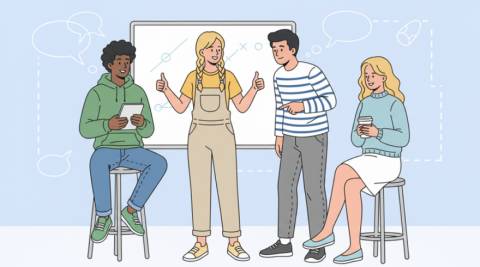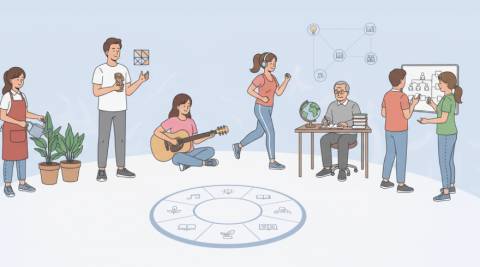Gardner Intelligence Test: A Comprehensive, Practical, and Research-Informed Guide

What It Is and Why It Matters
Educators, parents, coaches, and lifelong learners increasingly seek tools that illuminate strengths beyond narrow measures like traditional IQ. Among contemporary approaches, this framework emphasizes how people process information in varied, authentic contexts and how they demonstrate understanding through diverse performances. In practice, the model helps reframe ability as a spectrum of talents rather than a single ladder, which encourages growth, motivation, and confidence over time.
Among recognized instruments, the Gardner intelligence test helps practitioners translate the theory of multiple intelligences into actionable insights for instruction, guidance, and personal development. Unlike one-size-fits-all metrics, it invites reflection on real-world problem-solving, preferred modes of learning, and patterns of attention that often go unnoticed in standard evaluations. By surfacing these patterns, the approach empowers learners to advocate for themselves, choose strategies that work, and celebrate progress grounded in evidence.
Practical adoption has grown in classrooms, tutoring centers, HR development programs, and coaching practices because the method respects individuality while offering structured feedback. Users report stronger engagement when learning pathways match their cognitive dispositions, and they describe clearer self-awareness when they see how their strengths interact in teams. For those seeking a broad snapshot that still feels personal, the Gardner multiple intelligences test offers a balanced entry point that is both intuitive and nuanced.
- Focus on strengths without ignoring growth areas.
- Bridge between classroom, workplace, and everyday problem-solving.
- Encourages metacognition, agency, and purposeful practice.
The Theory and Structure of Multiple Intelligences
Howard Gardner’s seminal work proposed that human capability is multidimensional, reflecting distinct but interacting intelligences such as linguistic, logical-mathematical, spatial, musical, bodily-kinesthetic, interpersonal, intrapersonal, and naturalistic. Rather than ranking people on a single continuum, the model maps a profile of relative strengths, showing how combinations of intelligences drive unique excellence. This perspective explains why individuals may struggle in certain academic routines yet thrive in design, performance, leadership, or field-based inquiry.
For respondents who prefer a practical entry point, the Gardner multiple intelligence test typically uses scenario-based prompts, behavior indicators, and self-report reflections to estimate tendencies. Because performance is context-dependent, high-quality implementations triangulate questionnaire data with work samples, observations, and portfolios. Over time, the map becomes a living document that matures as experiences accumulate and skills deepen.
In educational planning, teams align learning tasks, evaluation methods, and supports with a learner’s profile to increase meaningful challenge. Organizations often pair role expectations with cognitive strengths to boost efficacy, collaboration, and well-being across departments. For those seeking an academically anchored instrument, the Howard Gardner multiple intelligences test inspired many derivatives that still honor the theory’s core principles while adapting to different age groups and settings.
The Eight Intelligences at a Glance
- Linguistic: expression, rhetoric, storytelling, precision with words.
- Logical-mathematical: patterning, inference, modeling, quantitative reasoning.
- Spatial: visualization, mental rotation, mapping, design sensibility.
- Musical: rhythm, pitch, timbre, composition, auditory patterning.
- Bodily-kinesthetic: coordination, craft, dexterity, embodied problem-solving.
- Interpersonal: empathy, mediation, leadership, collaborative sense-making.
- Intrapersonal: reflection, self-knowledge, goal setting, emotional insight.
- Naturalistic: classification, systems noticing, ecological reasoning, field observation.
Benefits and Practical Applications
When organizations embrace a strengths-based profile, they unlock continuous improvement without diluting standards. Instruction becomes more responsive, practice tasks become more resonant, and assessment becomes more authentic because evidence of understanding looks like the real work of the discipline. In the process, learners often experience less anxiety and greater persistence since they can approach challenges from angles that fit their cognitive toolkits.
For quick baseline insight in schools and camps, the Gardner test helps facilitators form heterogeneous groups, rotate roles, and differentiate tasks so everyone contributes meaningfully. Managers use similar insights to craft complementary teams, assign mentors strategically, and design professional learning that honors varied processing styles. Because strengths are distributed across people, collaboration becomes a powerful engine of innovation.
Coaches and tutors find that a conversational debrief can transform results into actionable routines aligned with goals. Families use the profiles to scaffold homework, enrichment, and hobbies that build momentum rather than friction. In informal learning settings, many participants enjoy the playful feel of a short-format option, and the Gardner multiple intelligences quiz supplies a light touch gateway before a deeper dive.
- Personalize learning plans and performance goals.
- Design choice-rich tasks that reveal understanding in multiple modes.
- Reduce attrition by aligning challenge with cognitive strengths.
- Inform talent development, mentoring, and leadership pipelines.
How to Interpret Results and Compare Profiles
Reading a profile is less about labeling and more about pattern recognition across contexts. Look for clusters of strengths that naturally combine in tasks, and note areas where motivation spikes because the mode of engagement resonates. Next, consider demands of the environment and how to translate profile insights into concrete strategies for study, collaboration, and performance.
For a more formal lens, the Gardner multiple intelligences assessment typically reports relative preferences rather than fixed scores, which means growth, coaching, and practice can materially shift outcomes. When comparing profiles, avoid ranking; instead, identify complementary blends that enhance team throughput, creativity, and problem coverage. Weight interpretations with concrete evidence like portfolios, feedback notes, and observed behaviors.
To make the mapping tangible, use a simple matrix that links prominent intelligences to fitting tactics and artifacts of learning. When discussing evidence, anchor claims in specific performances, not general impressions, to counter confirmation bias. In research-informed reviews, educators sometimes reference a more theory-grounded instrument, and the Gardner's multiple intelligence theory test provides a scholarly touchpoint for alignment.
| Intelligence | Strategic Moves | Evidence Examples |
|---|---|---|
| Linguistic | Leverage debate, summaries, and annotated notes | Briefs, essays, podcasts, teaching scripts |
| Logical-mathematical | Model with diagrams, proofs, and data stories | Analytic reports, code, structured problem sets |
| Spatial | Sketch, storyboard, prototype, map relationships | Design mockups, maps, 3D builds, dashboards |
| Musical | Use rhythm for memory cues and patterning | Compositions, audio motifs, sound analyses |
| Bodily-kinesthetic | Embed movement, manipulatives, and demonstrations | Performances, craft artifacts, lab demonstrations |
| Interpersonal | Peer teaching, facilitation, structured dialogue | Feedback logs, leadership reflections, meeting artifacts |
| Intrapersonal | Journaling, goal reviews, mindful planning | Reflection essays, learning plans, progress trackers |
| Naturalistic | Fieldwork, classification, systems mapping | Specimen catalogs, environmental reports, taxonomies |
- Triangulate self-report with artifacts and observations.
- Translate insights into weekly routines and role designs.
- Revisit profiles periodically to document growth and evolving goals.
Tips for Taking and Using the Assessment
Approach the experience as a reflective conversation rather than a verdict. Answer prompts based on typical behavior across settings, not isolated peaks or dips, and avoid gaming responses to match a preferred identity. Afterward, schedule a debrief to turn insights into habits, systems, and tools that fit your context and aspirations.
When choosing a toolset grounded in research, the Gardner theory of multiple intelligences test can provide a more rigorous anchor for longitudinal tracking. Pair the results with a habit-building plan that includes tactic experimentation, progress markers, and periodic check-ins so learning sticks. For teams, facilitate a norms-setting session that celebrates cognitive diversity and clarifies collaboration protocols.
Sustained impact emerges when insights shape daily work, not just one-off activities. Map your most valued tasks to strengths while planning deliberate practice for growth areas, then iterate as responsibilities shift. If you want a phrasing variant aligned to everyday language, some practitioners reference the multiple intelligence test Gardner when introducing the concept to broad audiences.
- Take notes on moments of flow, frustration, and curiosity during tasks.
- Collect evidence of learning in multiple modes to validate interpretations.
- Design choice boards and role rotations that leverage group strengths.
- Document small wins and refine strategies to build momentum.
FAQ: Clear Answers to Common Questions
Is this approach the same as an IQ test?
No, the framework profiles diverse capacities rather than measuring a single general factor. In many settings, educators use it to broaden access to rigorous learning while keeping expectations high for all students. For users who want an eight-domain snapshot aligned to a standard taxonomy, the Gardner 8 intelligences test offers a familiar map that is easy to explain and apply.
How reliable are the results over time?
Self-perception can shift as experiences deepen and feedback accumulates, so periodic retakes paired with evidence review are wise. Reliability improves when you triangulate with artifacts, observations, and performance tasks drawn from authentic work. In organizations with varied roles, teams often benefit from multiple formats because the Gardner intelligence tests available in the field differ in length, focus, and validation.
Can children use this model effectively?
Yes, age-appropriate prompts and playful debriefs help children recognize their strengths and choose helpful strategies. Teachers can design stations, choice boards, and reflective routines that translate insights into everyday habits. Guardians should focus on encouragement and exploration so that the profile becomes a guide for growth rather than a fixed label.
How do I integrate results into my teaching or coaching?
Start by mapping core tasks to strengths and planning scaffolds for growth areas, then embed reflection cycles to refine the fit. You can also redesign rubrics so students demonstrate understanding through multiple modes while meeting the same standards. Over time, incremental adjustments compound into durable gains in engagement, transfer, and self-efficacy.
What’s a good first step if I’m new to this?
Begin with a concise instrument, schedule a structured debrief, and set one or two practical habits to test in the coming week. Gather feedback and artifacts that show whether the strategies are working, then iterate with intention. As your familiarity grows, consider a deeper dive into the literature so that practice remains aligned with the underlying research.
Most importantly, remember that a profile is a tool for informed action, not a label to constrain potential. Align strengths with meaningful challenges, seek feedback from trusted peers, and celebrate evidence-based growth at every step. With thoughtful use and reflection, the approach can unlock sustained progress across learning, work, and life.
For readers who value naming consistency across resources, some communities prefer short labels for approachable entry points, while others emphasize scholarly language for precision. Across contexts, the goal remains to harness cognitive diversity for equitable opportunity and high performance. With intentional implementation, both individuals and teams can turn insights into repeatable, real-world results.
Latest News



